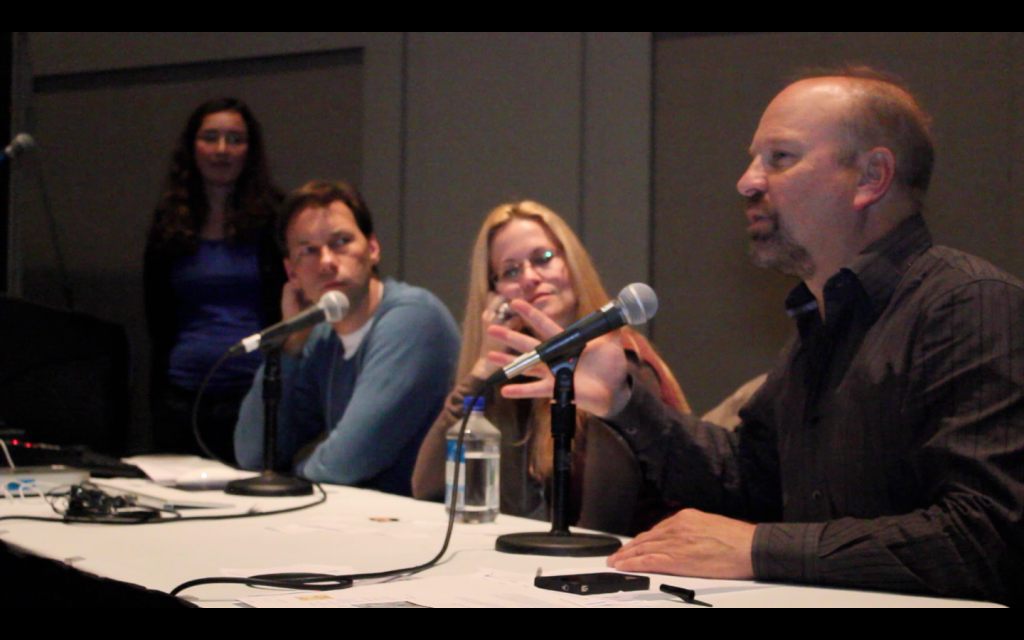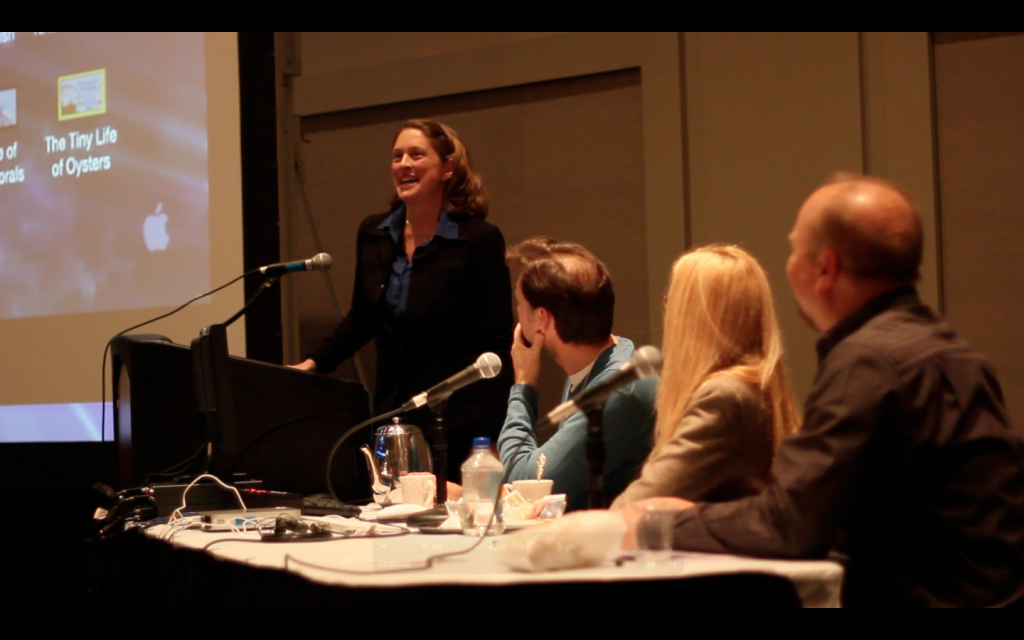#194) S FACTOR 2 was a big hit at the Ocean Sciences Meeting in SLC
February 21st, 2012
It was a great session and in a couple weeks we’ll have a video version of it.
 THE S FACTOR 2 PANEL AT WORK. From left, actor/improv instructor BRIAN PALERMO, actor/script analyst DORIE BARTON, and me during our 3 hour workshop at the Ocean Sciences meeting where we analyzed and discussed with the filmmakers and audience 10 five minute videos made by scientists. At the podium is Colleen Durkin who made the video, “Jellyfish: A Lifetime of Observation.”
THE S FACTOR 2 PANEL AT WORK. From left, actor/improv instructor BRIAN PALERMO, actor/script analyst DORIE BARTON, and me during our 3 hour workshop at the Ocean Sciences meeting where we analyzed and discussed with the filmmakers and audience 10 five minute videos made by scientists. At the podium is Colleen Durkin who made the video, “Jellyfish: A Lifetime of Observation.”
 Videomaker Elizabeth North talks about her short, “The Tiny Life of Oysters” as the S FACTOR PANEL.
Videomaker Elizabeth North talks about her short, “The Tiny Life of Oysters” as the S FACTOR PANEL.
science
S FACTOR 2 WAS ANOTHER GREAT INTERACTIVE EVENT BETWEEN 3 “HOLLYWOOD” TYPES AND 10 SCIENCE VIDEOMAKERS
It was great. No better word for it. I brought Dorie Barton and Brian Palermo with me as yet another sample of “the voice of Hollywood” to show the science world that not only are there a lot of very smart and friendly folks in Hollywood, they also have a great deal of helpful communication knowledge they are eager to share. We screened and discussed the following 10 videos (in alphabetical order):
Anthony Reisinger – Dead Zone
Matt Oliver – Flat Stanley
Juan Botella – Hydrography in the Southern Ocean
Colleen Durkin – Jellyfish: A Lifetime of Observation
Jason Jones – NASA DEVELOP
Nancy Penrose – Octopus Ballet
Dan Brinkuis/Leslie Peart – Penguin TV
Ari Shapiro – The Scientist Who Stays out in the Cold
Sue Cook – Tale of Two Corals
Elizabeth North – Tiny Oysters
The videos along with their feedback and comments from the panel can be found here. The quality of the videos just keep getting better with each event.
shrimp
A MOVIE IS WRITTEN THREE TIMES
If I had to offer up one general overview piece of advice (which hit me for the first time with this event) it’s that everyone needs to start thinking more about the advance work in making a video — namely scripting. Lots of the videos are made from footage shot during cruises or field projects where, after the fact, the videomaker sits down to figure out how to put it all together into something understandable. Which is great and fine, but the next level is to start writing the script BEFORE you shoot anything, and have your story worked out BEFORE you begin rolling the camera.
Not that you can’t assemble stories after the fact — documentary filmmakers do it all the time, and it’s my preferred mode for the most part. But … you want to make a really good film? You need to find a story, shape it, then shoot it.
It is often said that, “A movie is written three times — first as the script, then during the filming, then again during editing.” My overall advice from this session is for everyone to put a little more effort now into that first part.